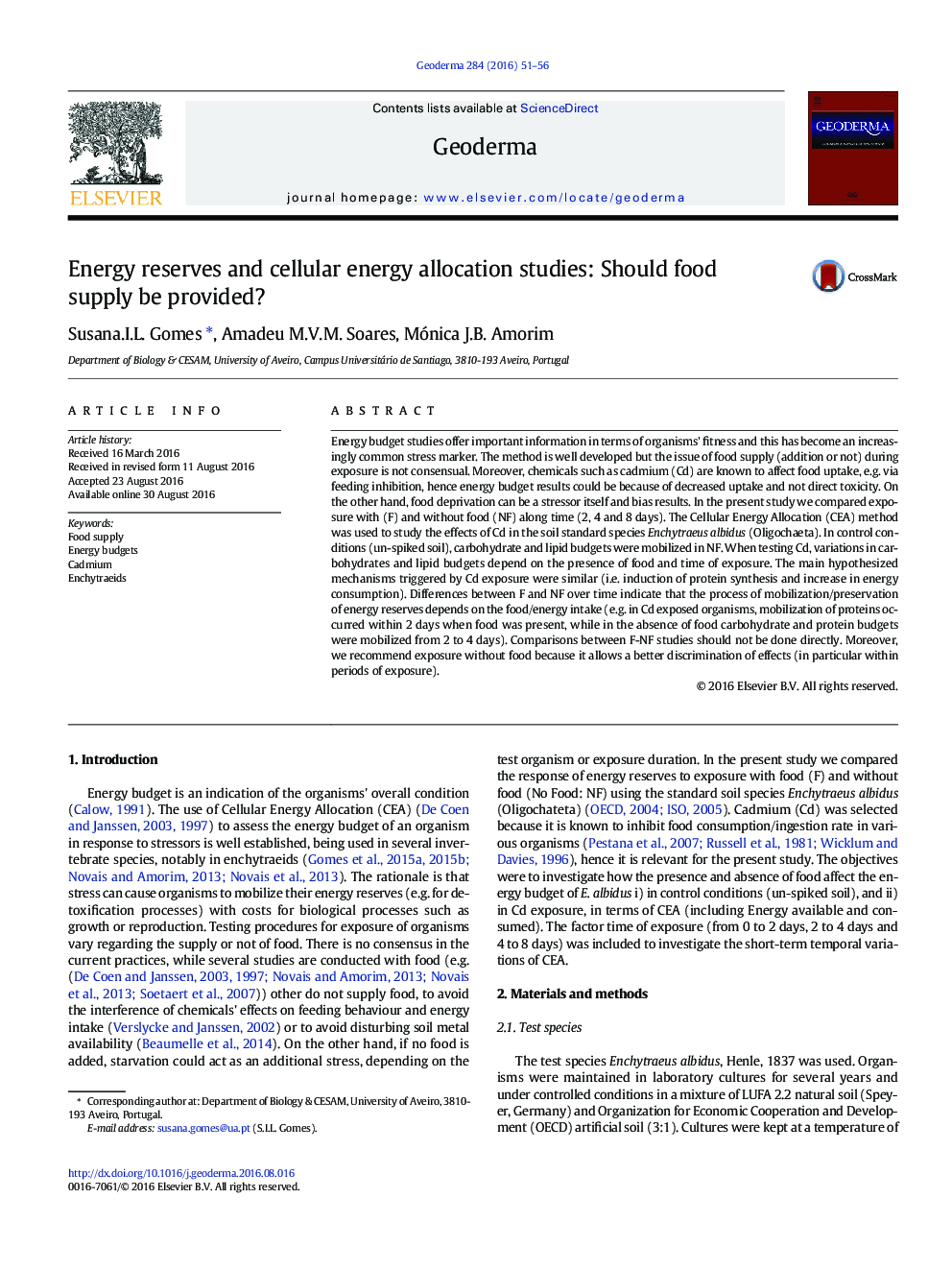| Article ID | Journal | Published Year | Pages | File Type |
|---|---|---|---|---|
| 6408274 | Geoderma | 2016 | 6 Pages |
â¢CEA was studied under food and no food regimes, for control and Cd exposure.â¢The presence of food influenced the mobilization of energy reserves.â¢Exposure without food supply is recommended to discriminate effects.
Energy budget studies offer important information in terms of organisms' fitness and this has become an increasingly common stress marker. The method is well developed but the issue of food supply (addition or not) during exposure is not consensual. Moreover, chemicals such as cadmium (Cd) are known to affect food uptake, e.g. via feeding inhibition, hence energy budget results could be because of decreased uptake and not direct toxicity. On the other hand, food deprivation can be a stressor itself and bias results. In the present study we compared exposure with (F) and without food (NF) along time (2, 4 and 8Â days). The Cellular Energy Allocation (CEA) method was used to study the effects of Cd in the soil standard species Enchytraeus albidus (Oligochaeta). In control conditions (un-spiked soil), carbohydrate and lipid budgets were mobilized in NF. When testing Cd, variations in carbohydrates and lipid budgets depend on the presence of food and time of exposure. The main hypothesized mechanisms triggered by Cd exposure were similar (i.e. induction of protein synthesis and increase in energy consumption). Differences between F and NF over time indicate that the process of mobilization/preservation of energy reserves depends on the food/energy intake (e.g. in Cd exposed organisms, mobilization of proteins occurred within 2Â days when food was present, while in the absence of food carbohydrate and protein budgets were mobilized from 2 to 4Â days). Comparisons between F-NF studies should not be done directly. Moreover, we recommend exposure without food because it allows a better discrimination of effects (in particular within periods of exposure).
